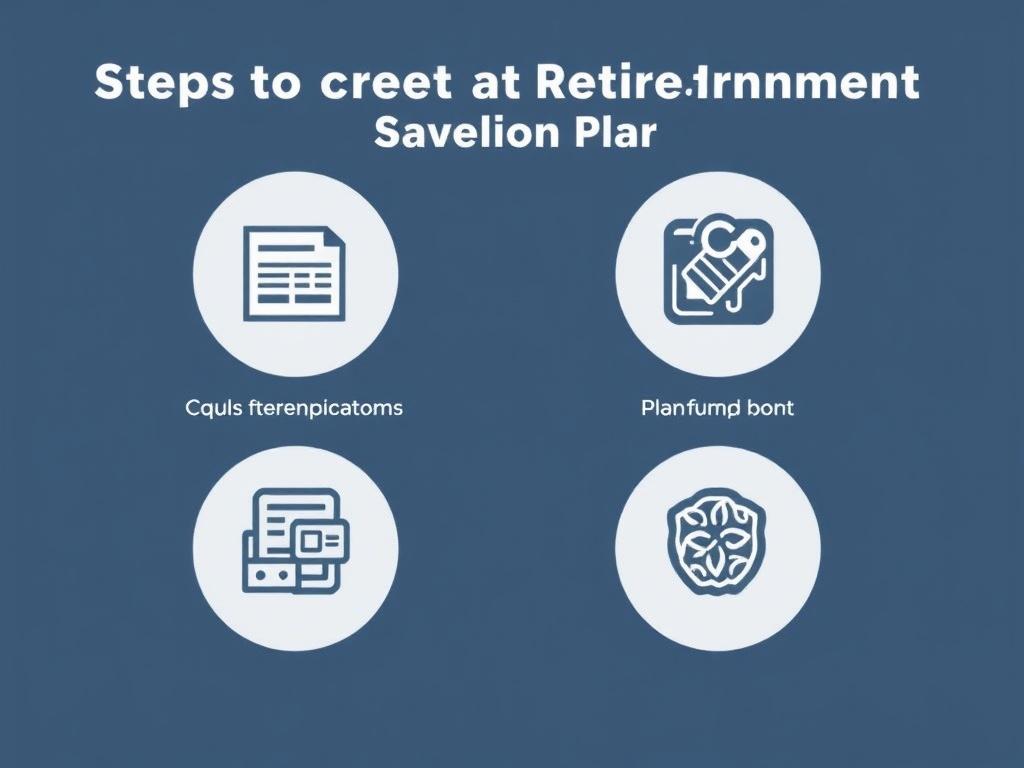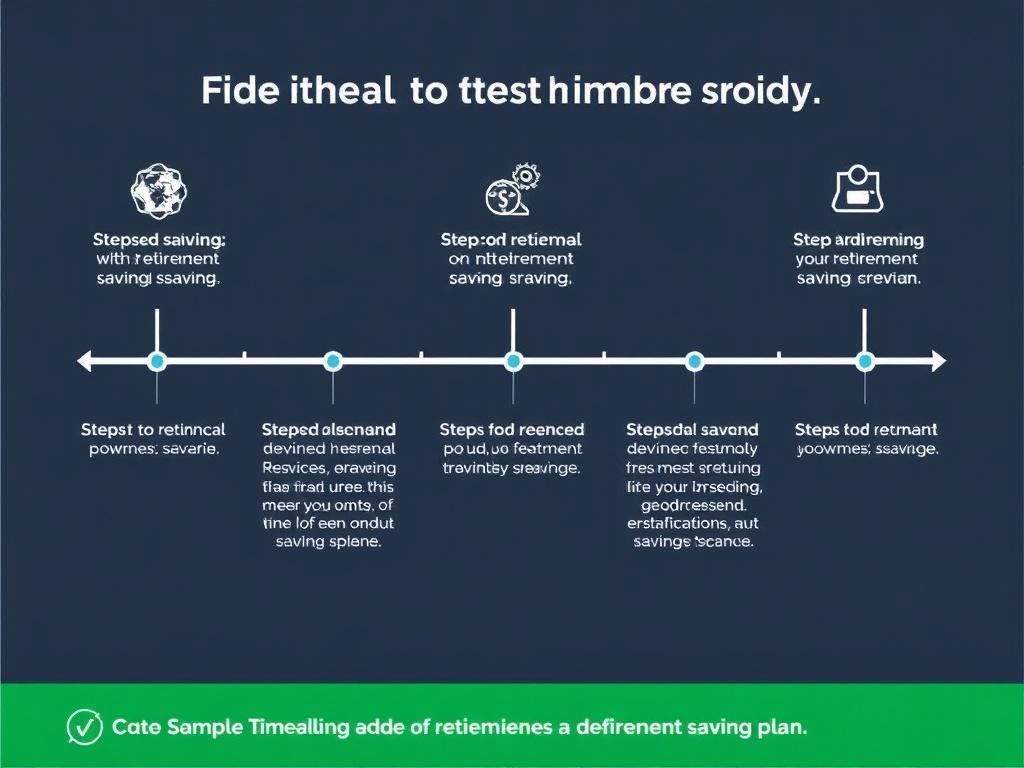SQLITE NOT INSTALLED
Planning for retirement might seem like a distant goal, but taking the right steps to create a retirement savings plan early can make all the difference. Whether you are just starting your career, in the middle of your working years, or even approaching retirement, having a clear savings plan ensures peace of mind and financial security. In this guide, we will walk you through practical, actionable steps to build a robust retirement savings plan tailored to your needs. By understanding the process and staying committed, you’ll be well on your way to a comfortable and worry-free retirement.
Содержание
Why Is Creating a Retirement Savings Plan Important?
Before diving into the steps, let’s understand why a retirement savings plan is crucial. Relying solely on Social Security benefits or pensions may no longer be sufficient to cover future living expenses, healthcare costs, or the lifestyle you desire. Inflation, longer life expectancy, and unexpected expenses can significantly impact your retirement finances. Therefore, taking control by creating a solid retirement savings plan helps you bridge financial gaps, protects your future, and offers flexibility when you finally decide to stop working.
Step 1: Assess Your Current Financial Situation

The foundation of every successful retirement savings plan begins with knowing where you stand financially. This step involves evaluating your current income, expenses, debts, and assets.
- Track Your Income and Expenses: Review your monthly take-home pay and where your money goes each month.
- Calculate Your Net Worth: List all your assets (savings, investments, properties) minus your liabilities (loans, credit card balances).
- Understand Your Debt: High-interest debts can hinder your savings progress. Prioritize paying these off while balancing retirement contributions.
By having a clear snapshot of your finances, you’ll be better equipped to develop a realistic and effective retirement savings strategy.
Tools to Help With Your Financial Assessment
To simplify this process, many tools and apps can help you track your income and expenses or calculate your net worth. Consider free budgeting tools like Mint, Personal Capital, or YNAB (You Need a Budget) to keep everything organized.
Step 2: Define Your Retirement Goals

Creating a retirement savings plan isn’t just about saving money; it’s about saving with a purpose. What do you want your retirement to look like? Defining your retirement goals helps determine how much you need to save.
- Retirement Age: When do you plan to retire? The earlier you retire, the more you need to save upfront.
- Lifestyle Expectations: Do you plan to travel extensively, maintain your current lifestyle, downsize, or take up new hobbies?
- Health Care Needs: Factor in health expenses, which tend to increase with age.
- Legacy Goals: Consider if you want to leave money for heirs or charities.
Create a list of these goals, as it will provide a target number to aim for in your retirement savings.
Step 3: Calculate How Much You Need to Save
Now that you know your retirement goals, it’s time to turn those into numbers. Use these calculations to estimate the size of the retirement fund you’ll need.
Estimating Required Savings
One popular rule of thumb is the “25x Rule” — multiply your estimated annual living expenses in retirement by 25 to get the total amount you should aim to save. This is based on the assumption that a 4% withdrawal rate annually will allow your nest egg to last.
For example:
| Annual Retirement Expenses | Multiply by | Estimated Retirement Savings Needed |
|---|---|---|
| $40,000 | 25 | $1,000,000 |
| $60,000 | 25 | $1,500,000 |
| $80,000 | 25 | $2,000,000 |
Keep in mind, this is a simplified approach. Factors like inflation, taxes, Social Security benefits, and investment returns can affect the actual amount needed.
Consider Inflation and Longevity
Remember that inflation erodes purchasing power over time. If inflation averages 3% per year, your retirement expenses will increase annually. Also, increasing life expectancy means your savings need to last longer. Thus, it’s better to be conservative and save more if possible.
Step 4: Choose the Right Retirement Savings Accounts
Understanding the different retirement savings vehicles is essential to maximizing your savings and minimizing taxes. Here’s a breakdown of popular options:
| Account Type | Description | Tax Advantages | Contribution Limits (2024) |
|---|---|---|---|
| 401(k) | Employer-sponsored plan that allows payroll deductions. | Tax-deferred contributions and growth; some employers offer matching. | $23,000 (with $7,500 catch-up if 50+) |
| Traditional IRA | Individual retirement account with tax-deferred growth. | Contributions may be tax-deductible; withdrawals taxed. | $7,000 (with $1,000 catch-up if 50+) |
| Roth IRA | Individual retirement account with tax-free growth. | Contributions made with after-tax money; withdrawals are tax-free. | Same as Traditional IRA |
| Health Savings Account (HSA) | Tax-advantaged account to save for medical expenses. | Contributions pre-tax; withdrawals tax-free for qualified expenses. | $4,150 for individuals, $8,300 for families |
Employer Match: Don’t Miss Out
If your employer offers a 401(k) match, contribute at least enough to get the full match—that’s free money towards your retirement savings.
Step 5: Develop a Savings and Investment Strategy
A strong retirement savings plan isn’t complete without a tailored investment strategy. Simply socking money away isn’t enough; your funds should work for you by growing over time.
Asset Allocation
Your asset allocation should reflect your age, risk tolerance, and retirement timeline. Generally, younger savers can afford to be more aggressive with stocks because they have time to ride out market fluctuations. As retirement nears, it’s wise to gradually shift towards more conservative investments like bonds and cash equivalents.
Investment Options
- Stocks: Offer growth potential but with higher volatility.
- Bonds: Provide more stability and income but lower returns.
- Mutual Funds/ETFs: Diversify your investments easily.
- Target-Date Funds: Automatically adjust asset allocation based on your projected retirement year.
Consistent Contributions and Dollar-Cost Averaging
Set up automatic contributions to your retirement accounts. This approach, known as dollar-cost averaging, means you buy investments consistently over time, smoothing out the impact of market ups and downs.
Step 6: Monitor and Adjust Your Plan Regularly
Creating a retirement savings plan is not a one-and-done task. Life changes—new job, family, economic conditions—can all affect your goals and ability to save.
- Review Annually: Assess your savings progress, investment performance, and goals at least once a year.
- Adjust Contributions: Increase savings rate when possible—especially with salary raises or bonuses.
- Rebalance Portfolio: Ensure your investments maintain your desired asset allocation.
- Update Goals: Modify your retirement age or lifestyle plans as needed.
Keeping an eye on your plan ensures you stay on track and make timely changes to meet your retirement dreams.
Step 7: Consider Working With a Financial Advisor
If you find this process overwhelming, consulting a financial advisor can provide personalized guidance tailored to your unique financial picture. Advisors can help you:
- Create a comprehensive retirement savings plan.
- Optimize tax strategies.
- Select appropriate investments.
- Plan for unexpected financial events.
Look for fee-only fiduciaries who prioritize your interests, and be sure to ask about fees upfront.
Common Mistakes to Avoid When Creating a Retirement Savings Plan
When building your retirement savings plan, steer clear of these common pitfalls:
- Starting Too Late: Delaying savings means you’ll have to save more later to meet your goals.
- Underestimating Expenses: Overlooking inflation and future healthcare costs can reduce your purchasing power.
- Relying Only on Social Security: These benefits usually cover only a part of your retirement needs.
- Neglecting to Diversify: Putting all your money in one investment type increases risk.
- Withdrawing Early: Taking money out before retirement age can lead to penalties and lost growth.
Additional Tips to Enhance Your Retirement Savings Plan
Here are some practical tips to boost your savings plan:
- Take advantage of catch-up contributions if you’re 50 or older.
- Reduce unnecessary expenses and funnel savings into retirement accounts.
- Maximize employer benefits and perks.
- Explore side hustles or additional income streams to increase savings potential.
- Consider downsizing living arrangements to free up funds.
- Stay informed about changes in retirement laws and benefits.
Sample Timeline for Creating Your Retirement Savings Plan

If you’re wondering how to pace your retirement planning, here’s a sample timeline based on age groups:
| Age Range | Key Action Items |
|---|---|
| 20s to Early 30s | Establish an emergency fund, start contributing to a 401(k) or IRA, set savings goals. |
| Mid 30s to 40s | Increase retirement contributions, pay down debt, balance investment portfolio, review goals. |
| 50s to Early 60s | Maximize catch-up contributions, plan for healthcare, consider retirement income strategies. |
| Mid 60s and Beyond | Finalize retirement plans, start withdrawing according to strategy, adjust lifestyle as needed. |
Conclusion
Creating a retirement savings plan is a vital step toward securing your financial future and achieving peace of mind. By assessing your current finances, defining clear goals, calculating the amount you need to save, and choosing the right accounts and investments, you build a strong foundation for your retirement. Remember, consistency, regular reviews, and adjustments keep your plan aligned with your evolving circumstances. Avoid common mistakes and seek professional guidance if needed to optimize your strategy. Regardless of your age or income, taking deliberate steps now can set you up for a fulfilling and comfortable retirement. Start today, stay committed, and watch your savings grow into the freedom and security you deserve.
Опубликовано: 24 July 2025 Кредитрон – блог о кредитах, финансах и прочих реверансах
Кредитрон – блог о кредитах, финансах и прочих реверансах

